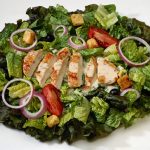
Intensive treatment to lower high blood pressure can decrease older adults’ risk of sharp blood pressure drops that can cause dizziness and increase the likelihood of falling, a new study says. It included more than 2,800 patients, average age 63, who had recently suffered a stroke. Half received more aggressive treatment to lower their blood pressure to below 130/80 mm Hg. The others got less intensive therapy with a target of between 130-149/80-90 mm Hg or more. Blood pressure levels and symptoms were monitored over an average 15 visits per patient. During each visit, blood pressure was measured three times while a patient was seated and one time after two minutes of standing. This was done to detect any changes and symptoms of orthostatic hypotension (OH), a sudden drop in blood pressure that can occur when a person goes from sitting to standing. OH is associated with dizziness and increased risk of falling. More aggressive blood pressure treatment and systolic blood pressure of 130 mm/Hg or under was associated with a lower risk of OH. Systolic blood pressure is the top number in a reading and represents the force of blood flow against the arteries when the heart contracts. The study was presented Saturday at an American Heart Association meeting, in New Orleans. Research presented at meetings is typically considered preliminary until published in a… read on >























-300x200.jpg)













